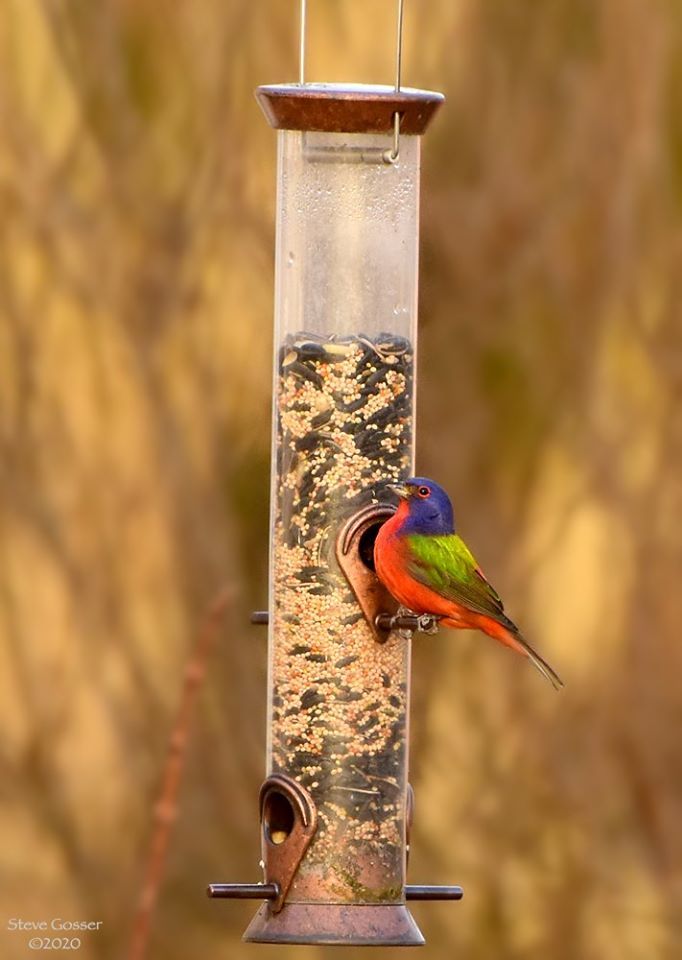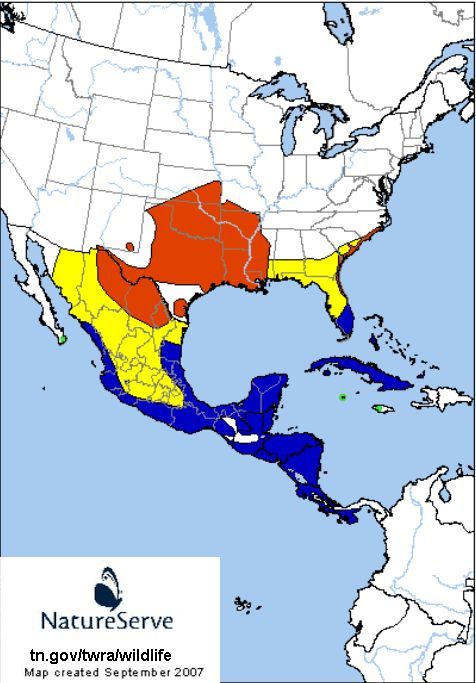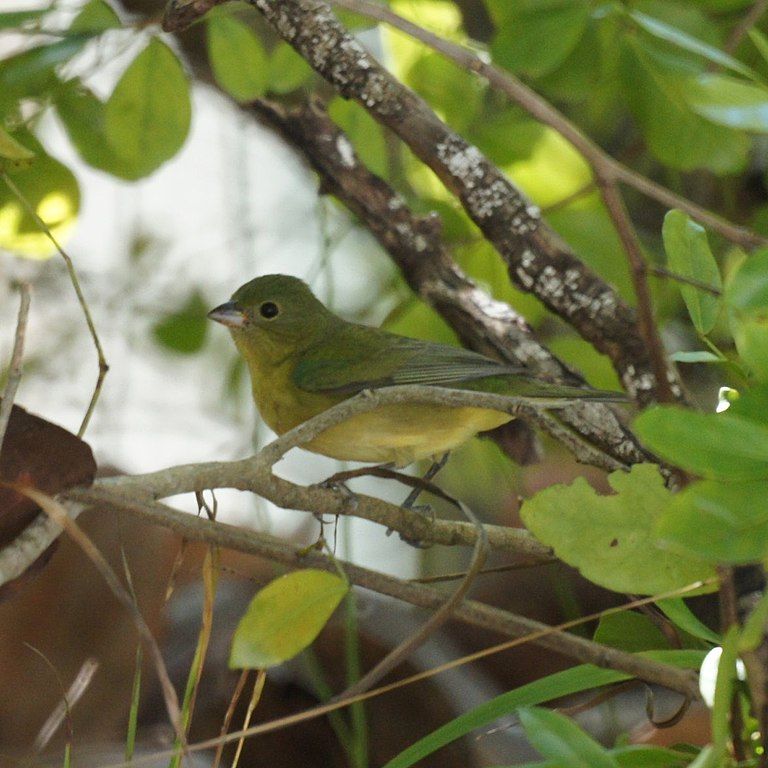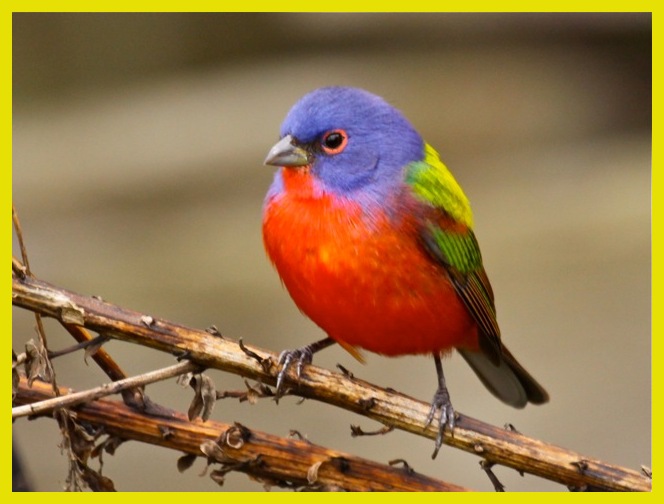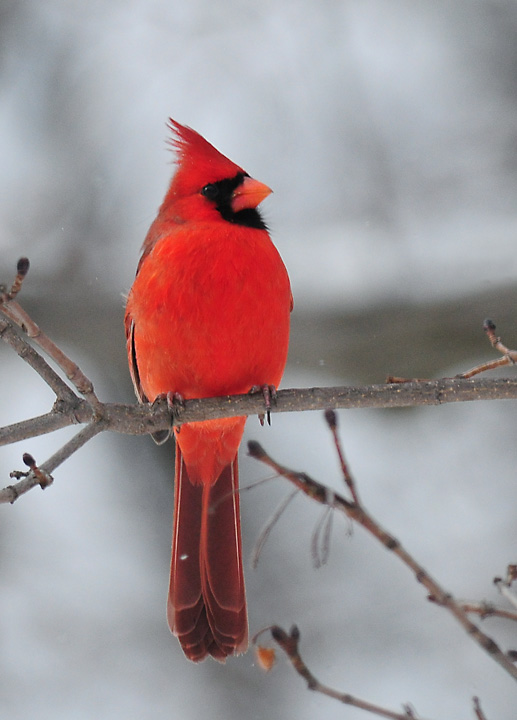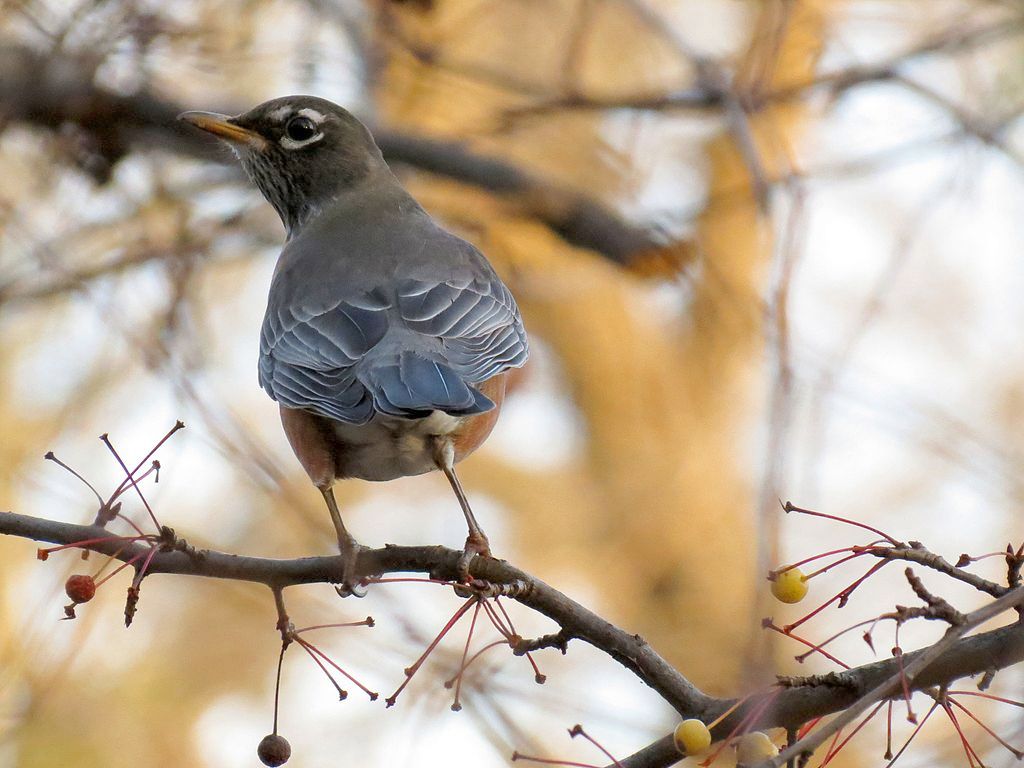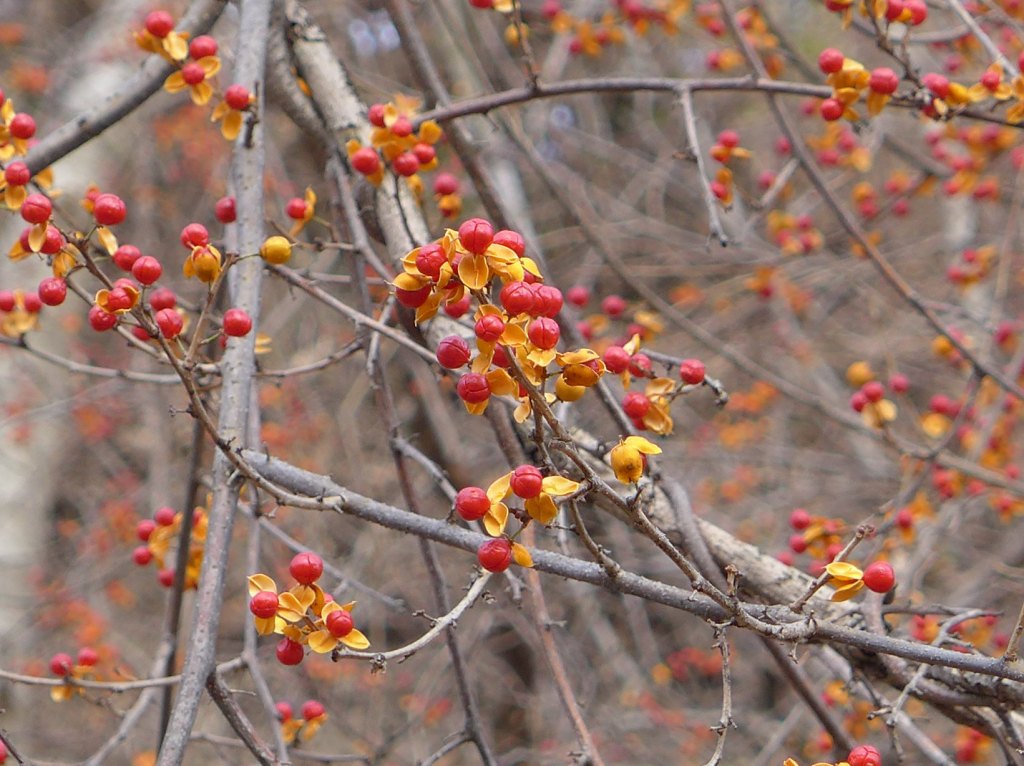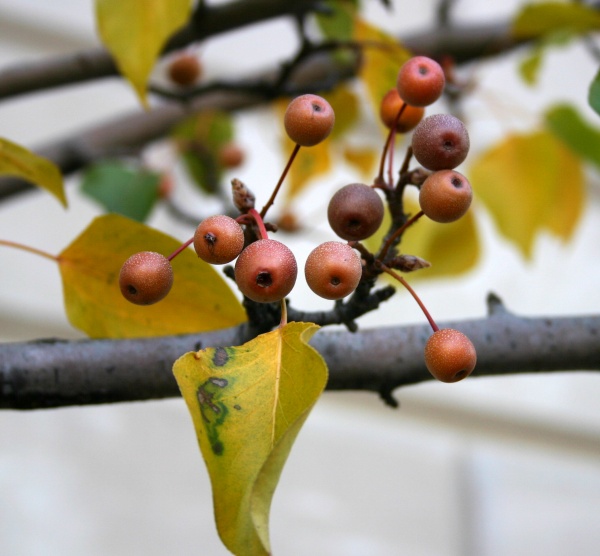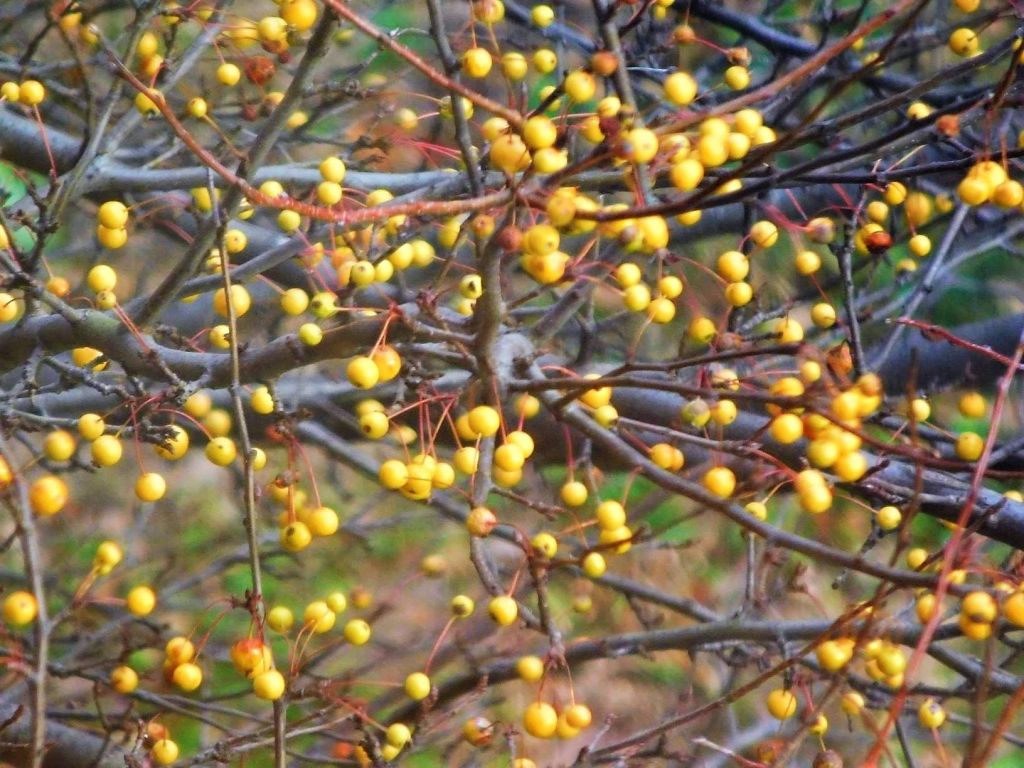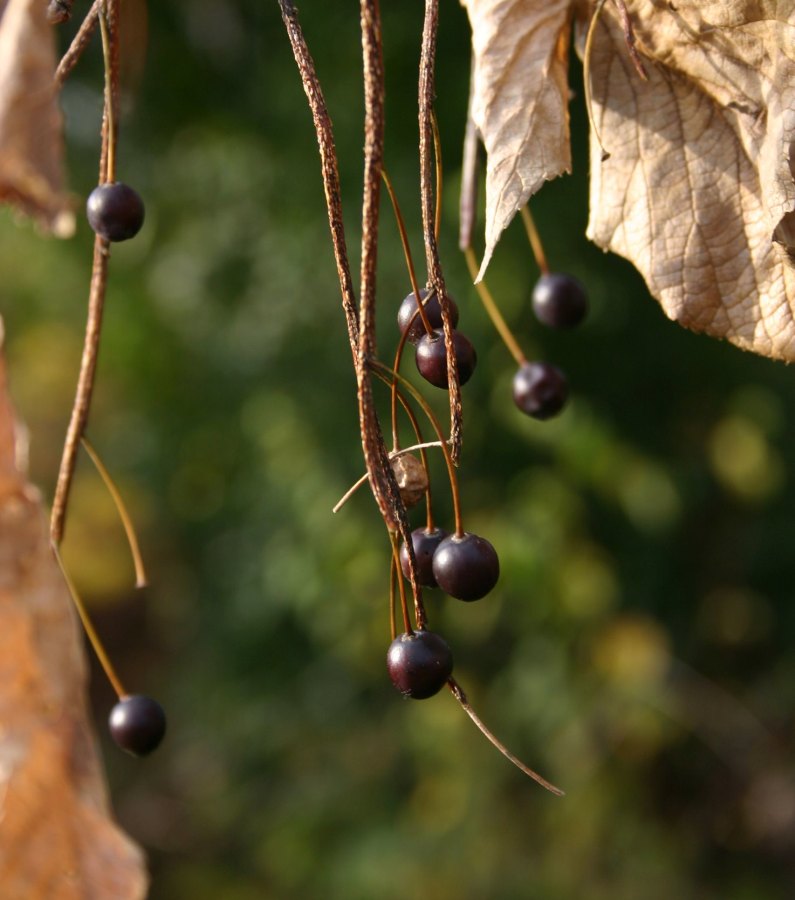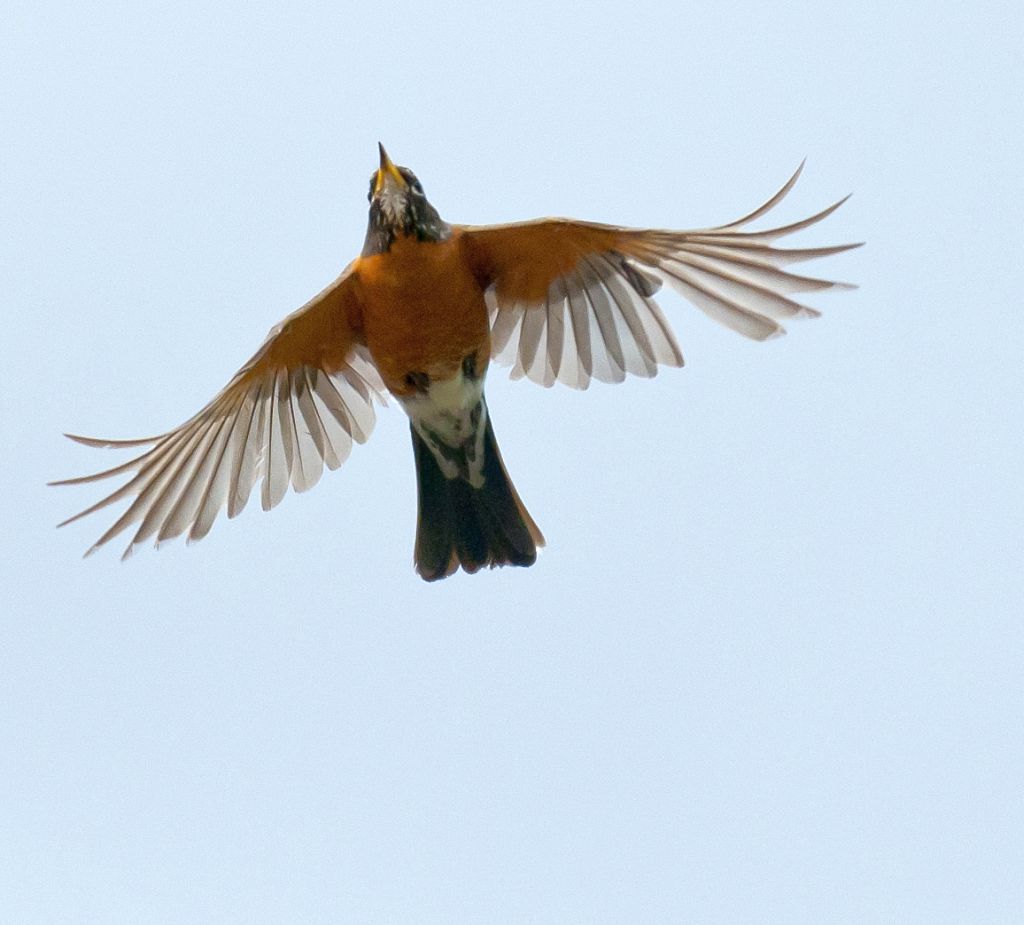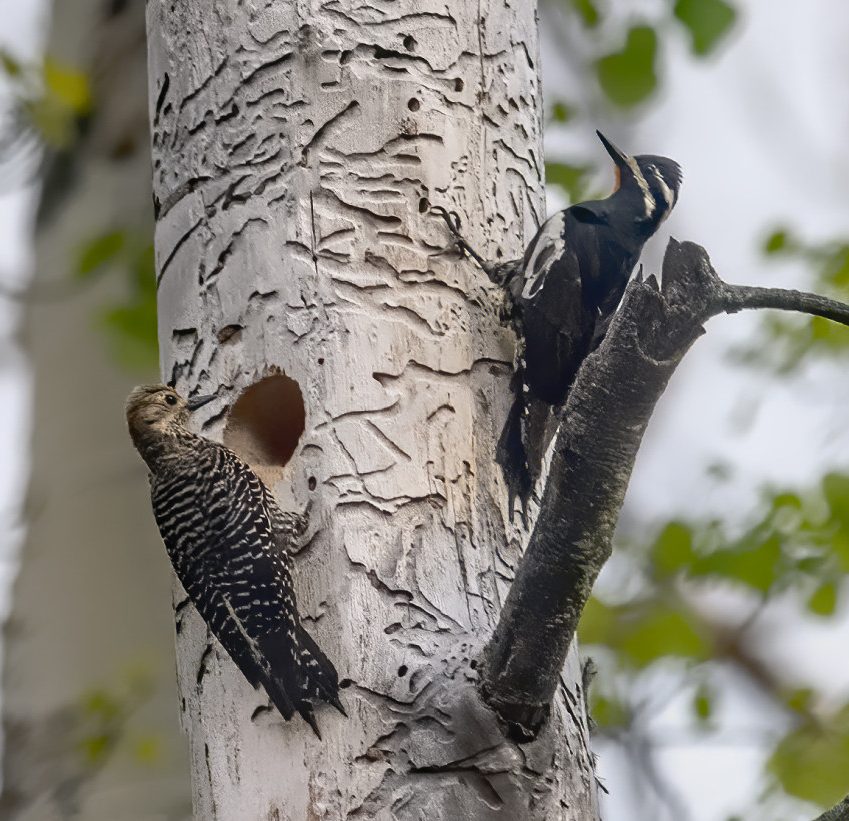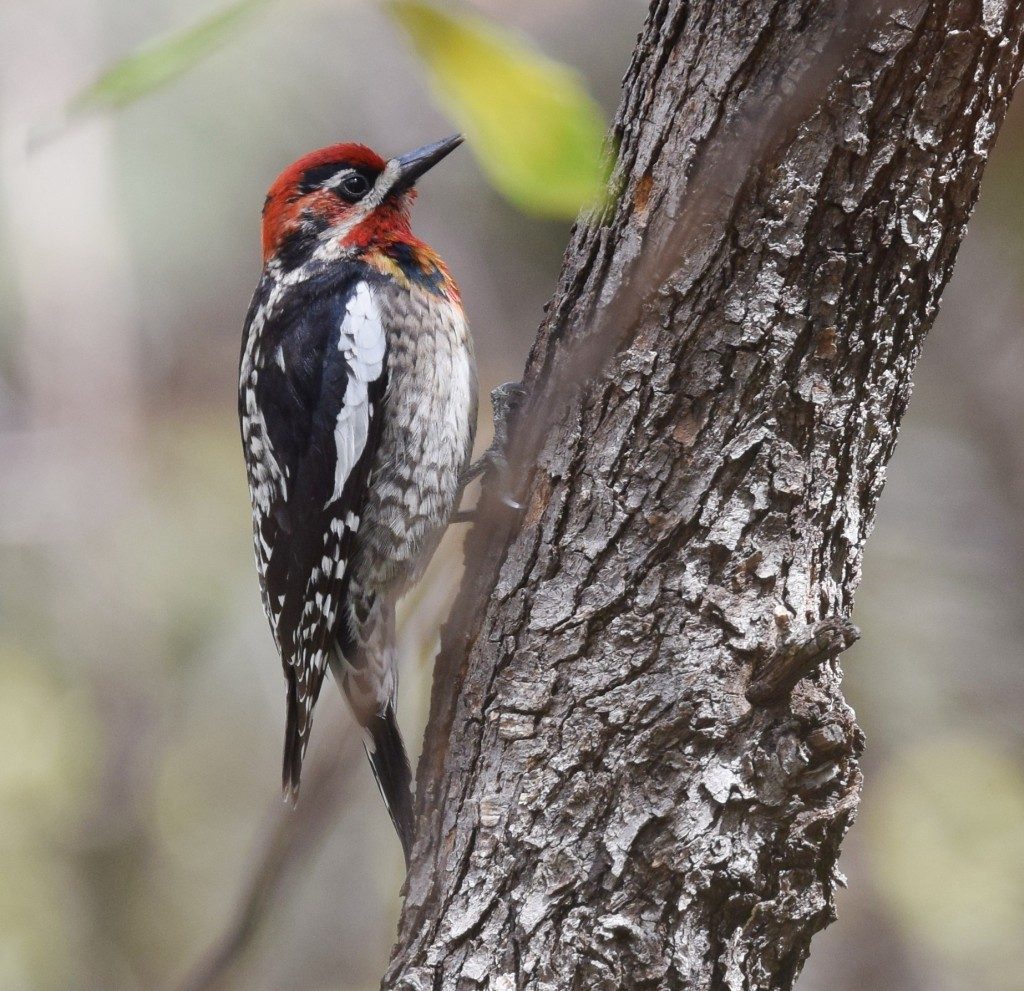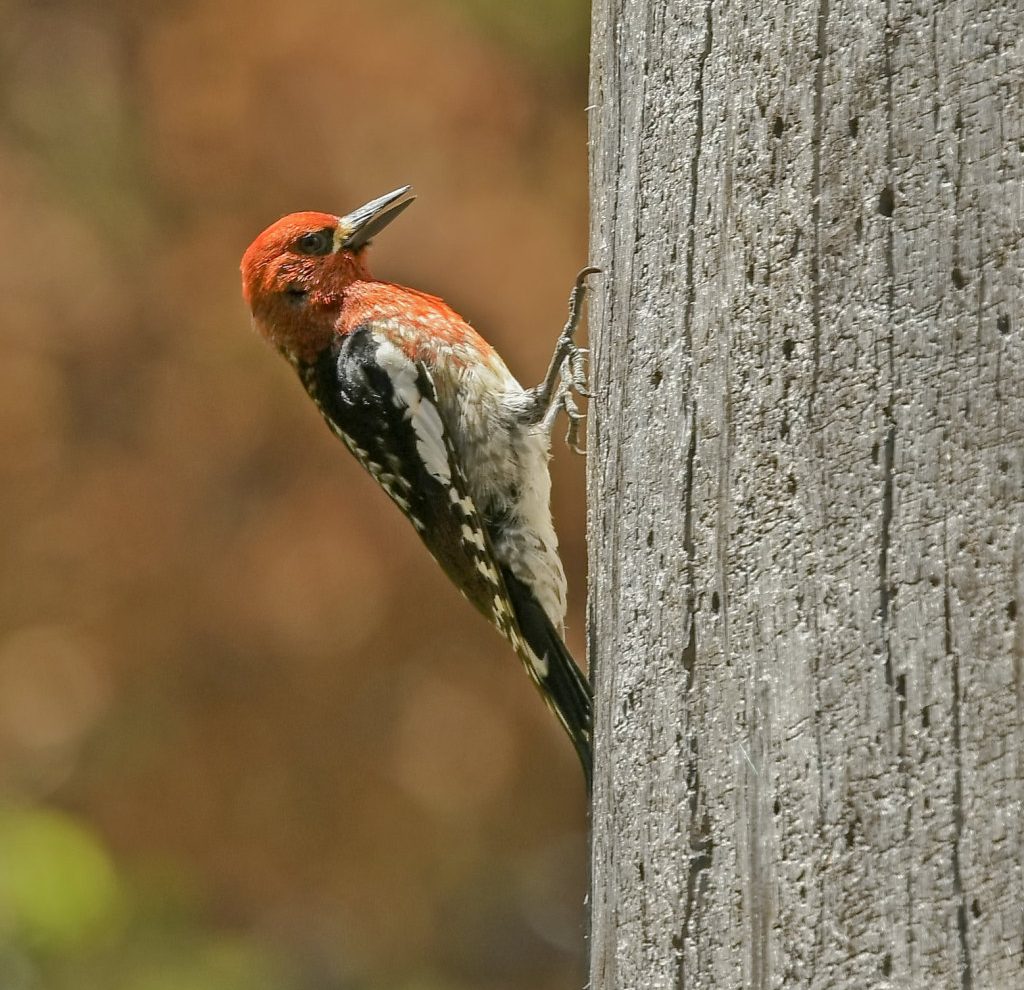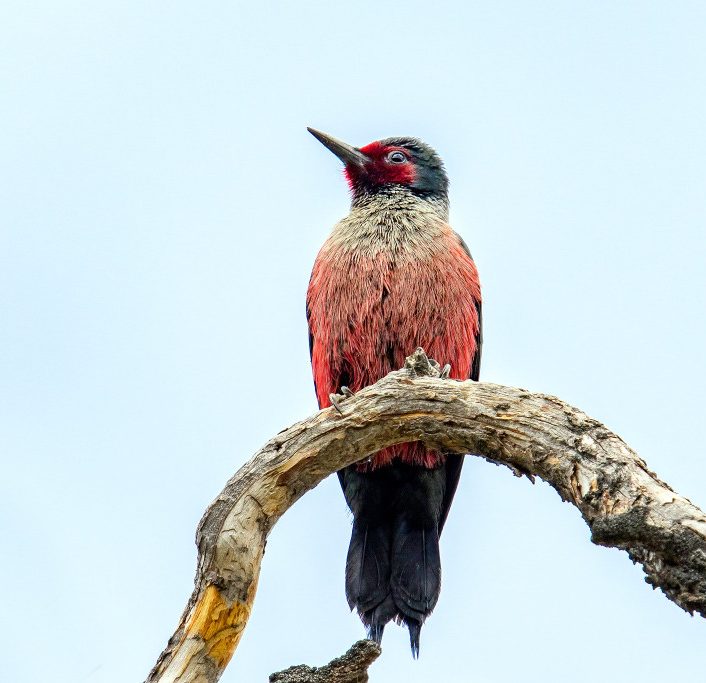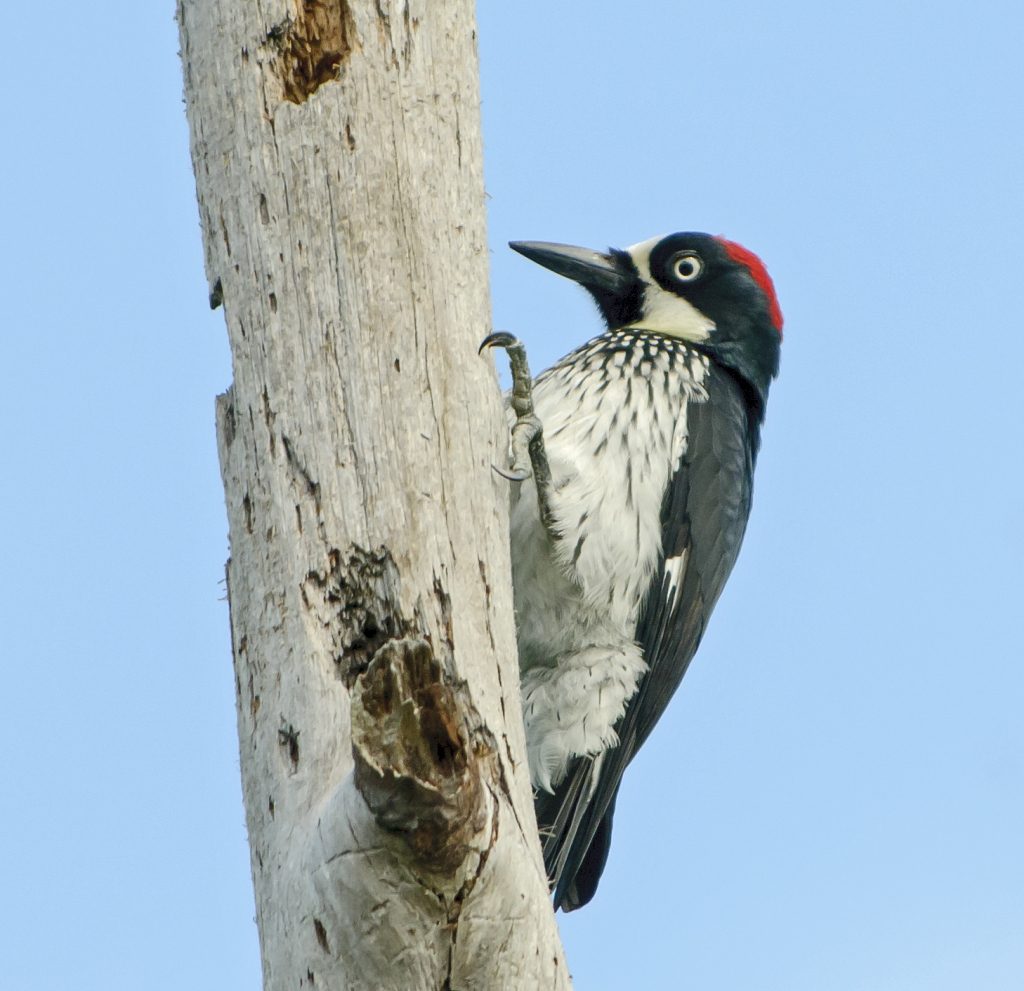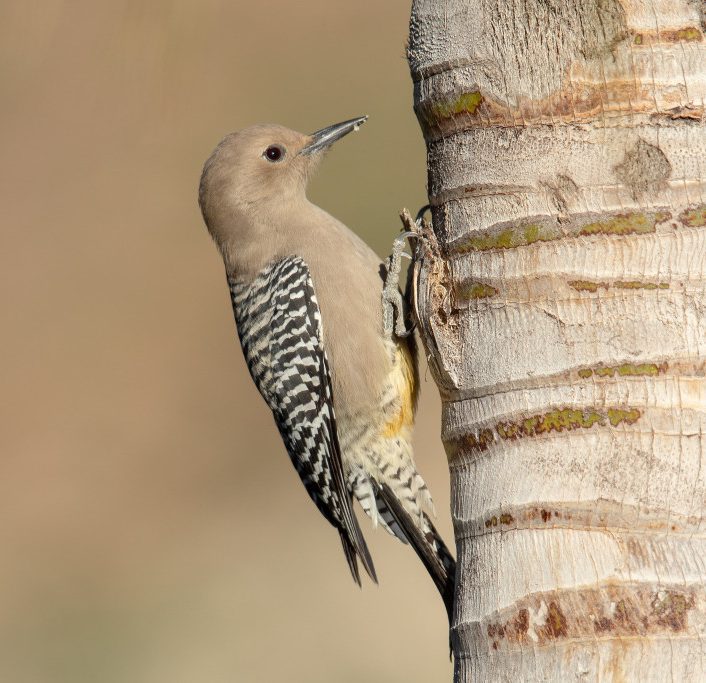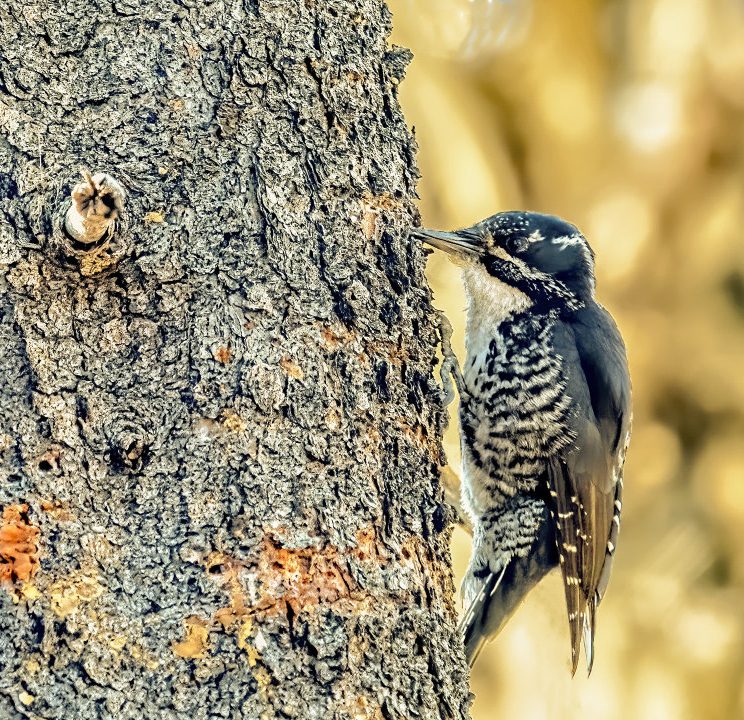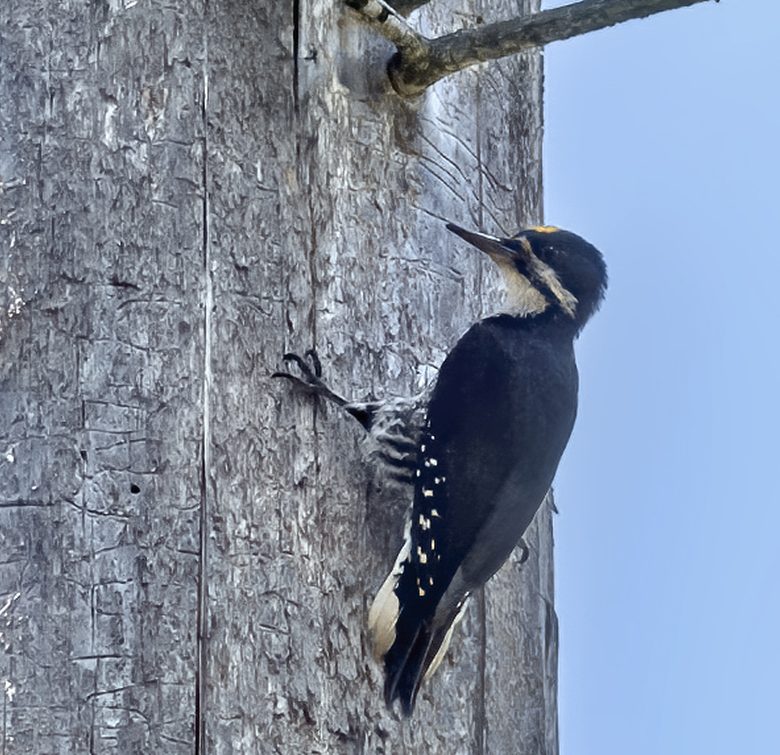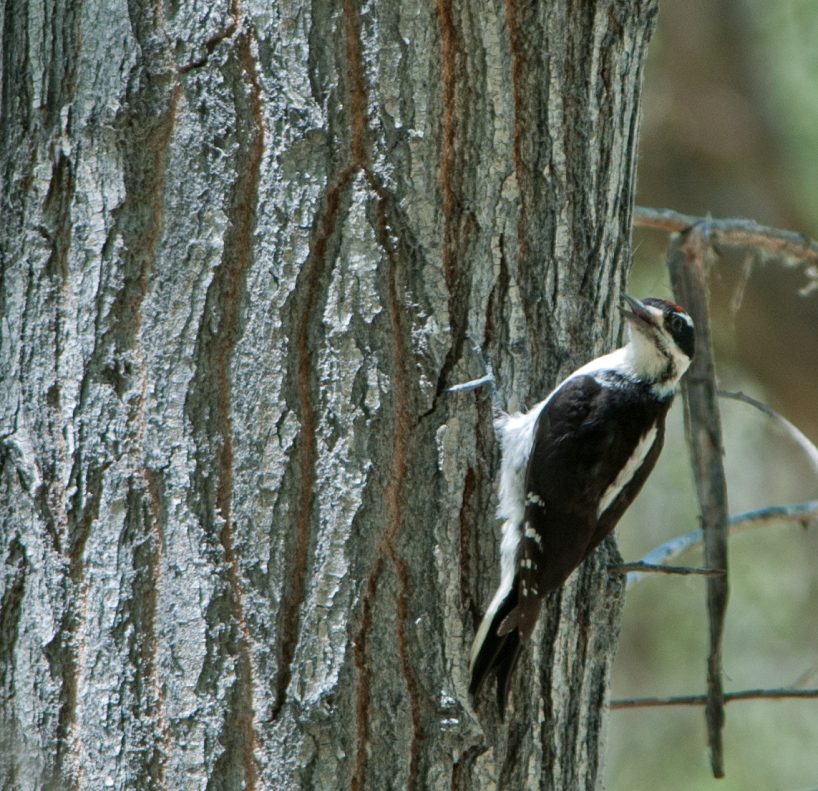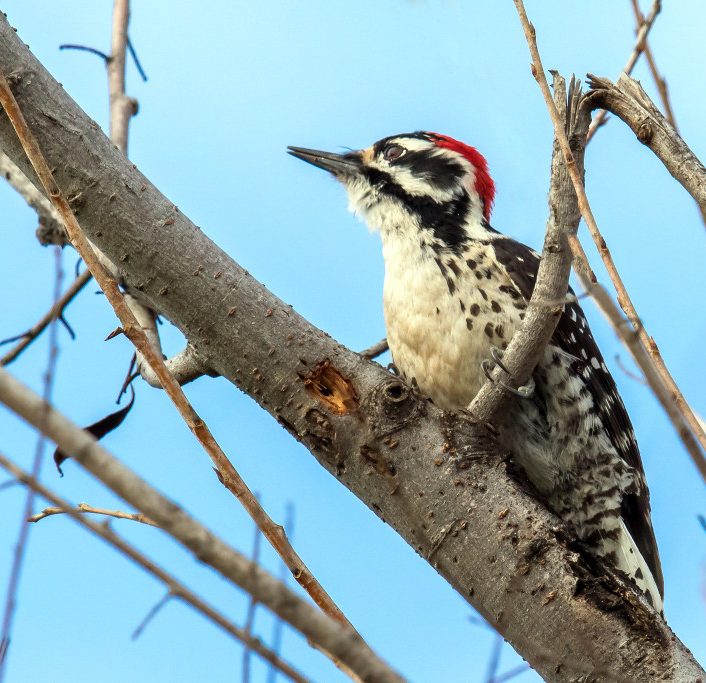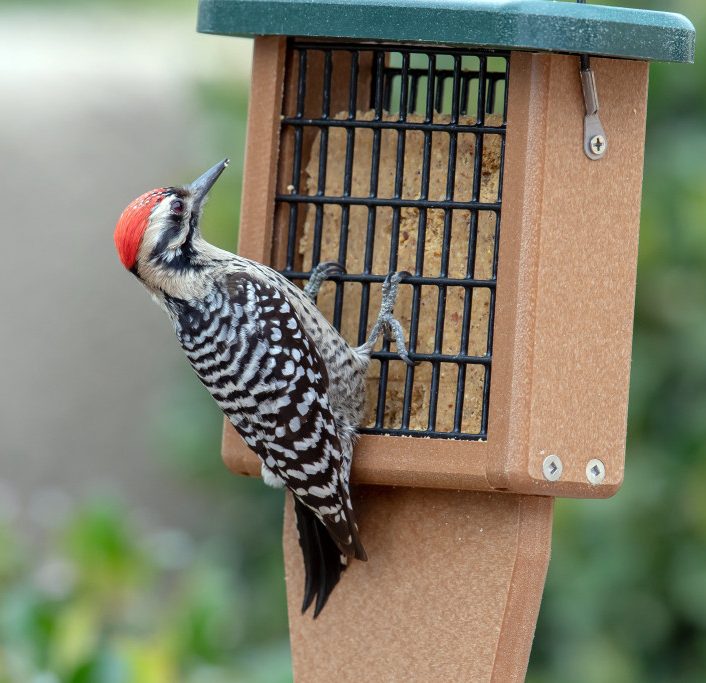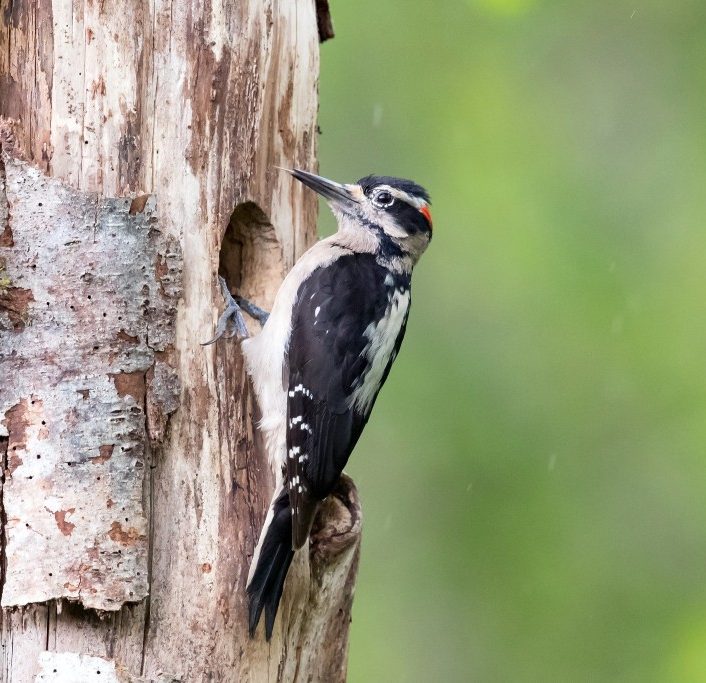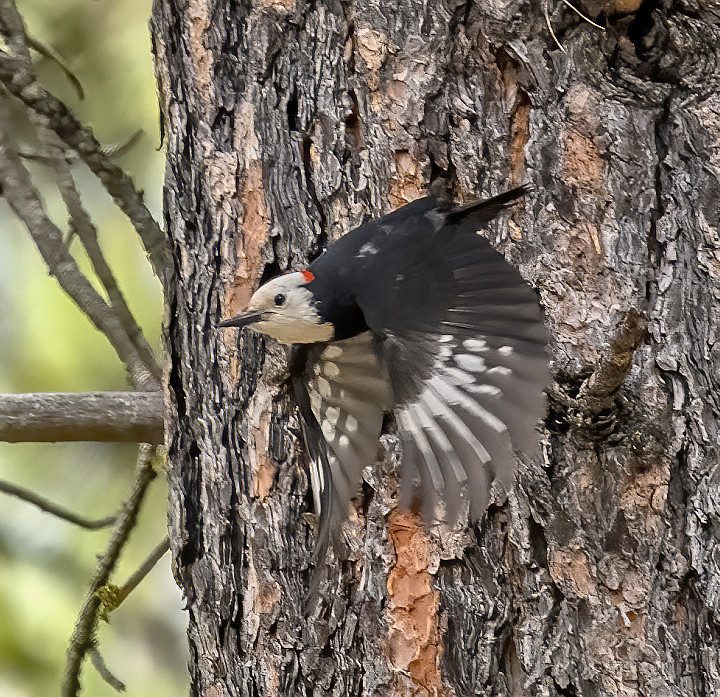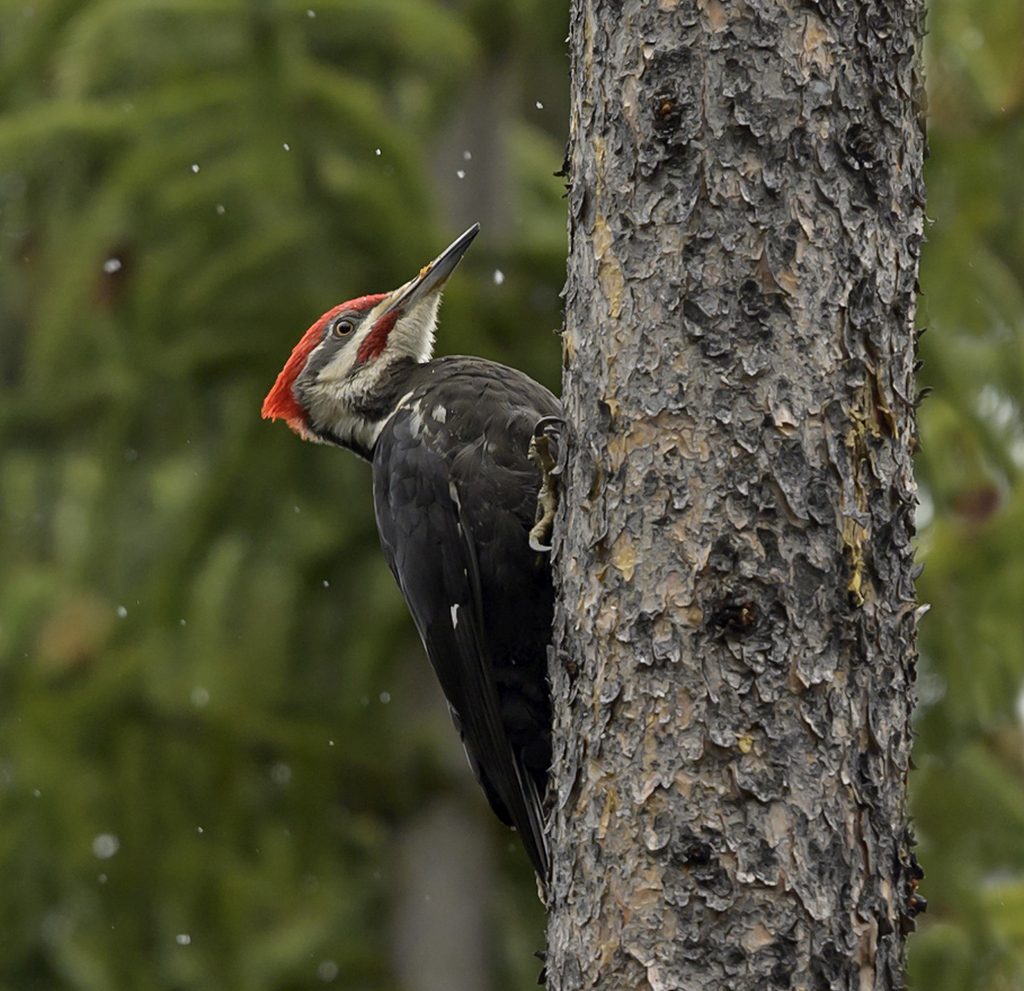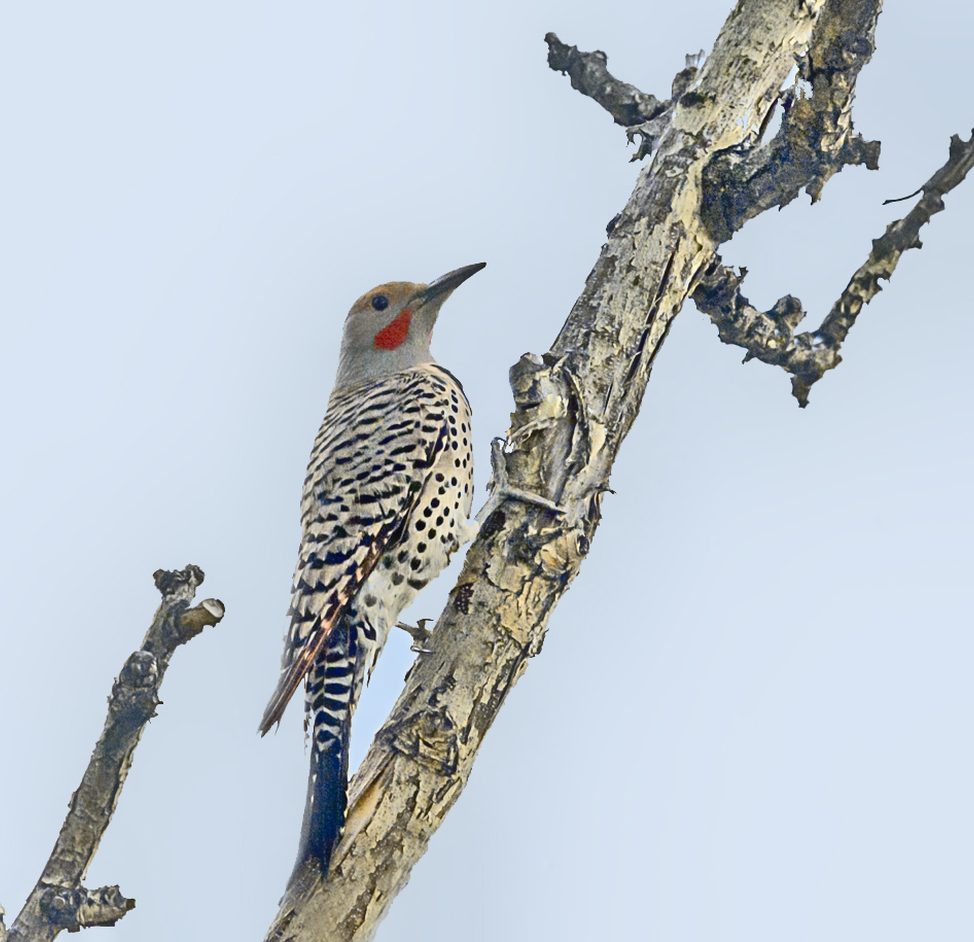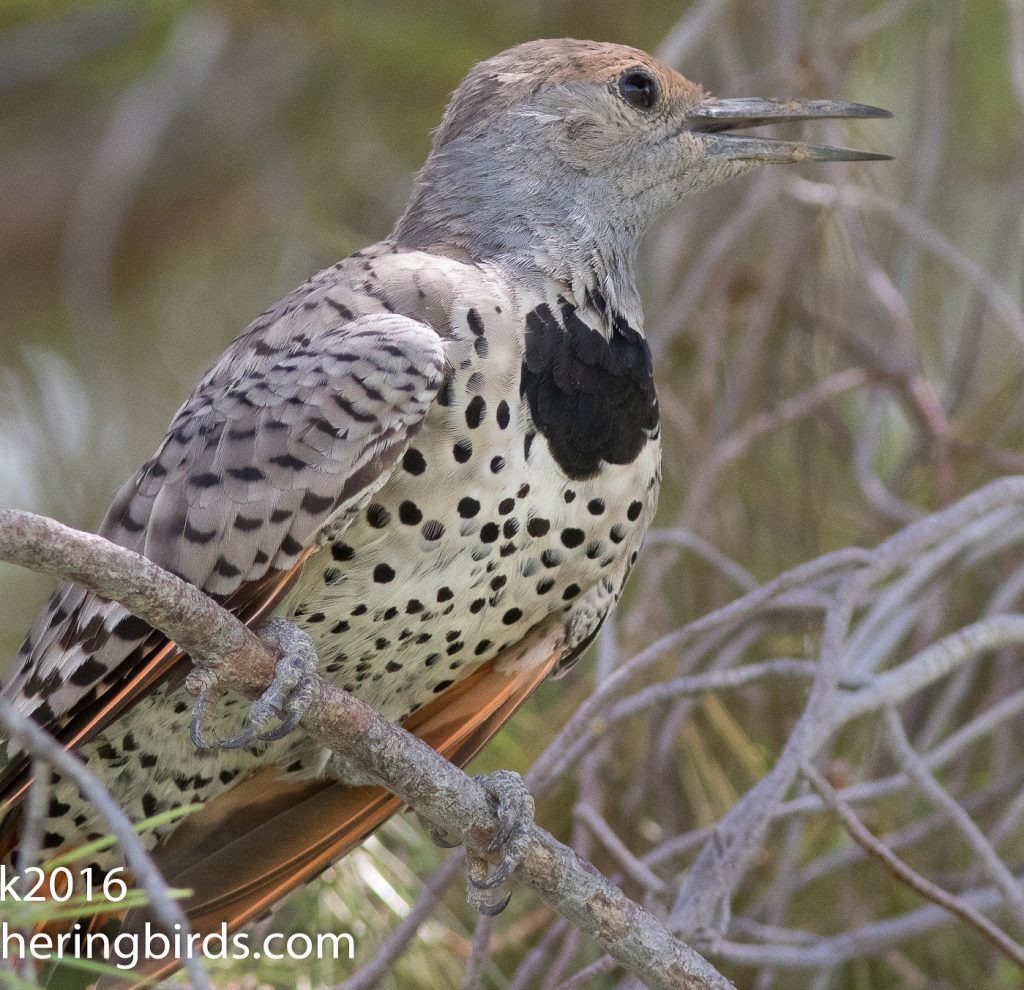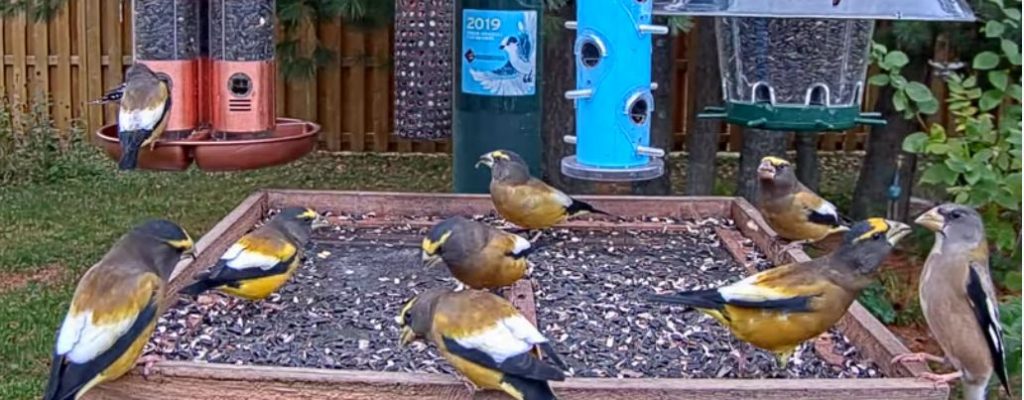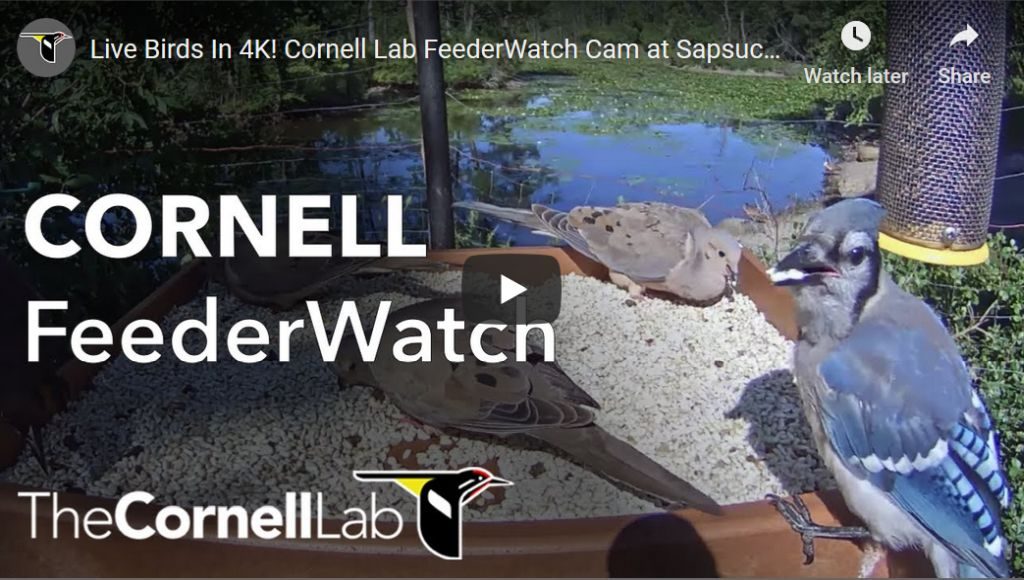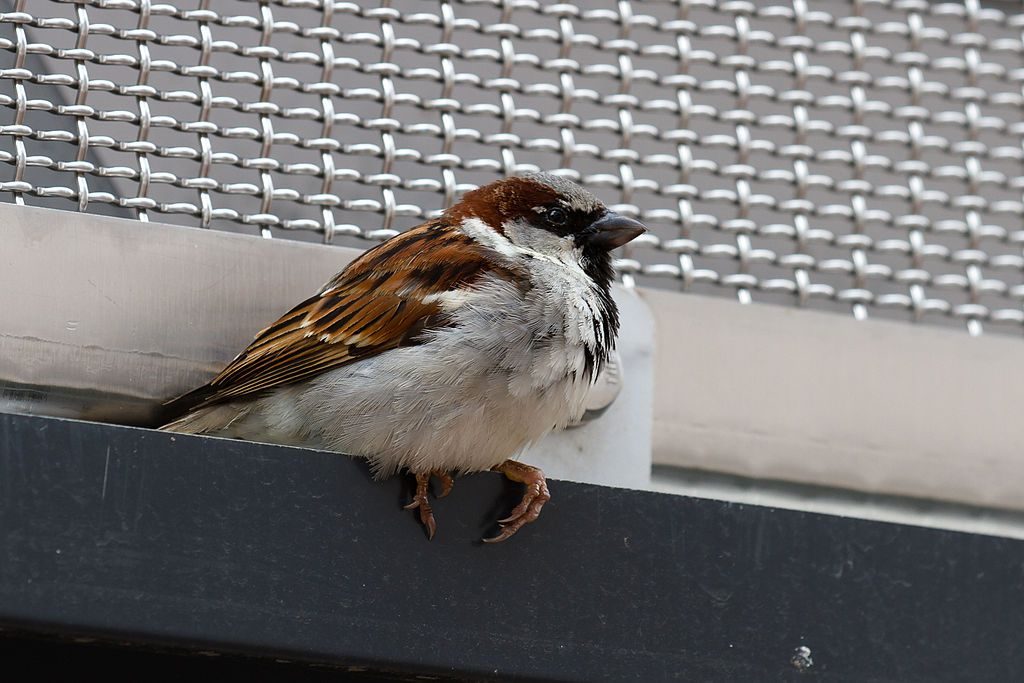In eastern North America we have chickadees and kinglets but we never get to see this tiny social bird, the bushtit, that lives year-round from southwestern Canada to Central America.
The bushtit’s name (Psaltriparus minimus) has the same origin as the titmouse’s.
The scientific name for Bushtit is Psaltriparus minimus and the second half of Psaltriparus, “parus,” is Latin for titmouse. And the “tit” in titmouse comes from Old Icelandic “titr” meaning something small.
— description of video by John Hamil
Bushtits are extremely social, hanging out in flocks of 10 to 40 birds, moving through the trees and bushes gleaning tiny insects off leaves and branches. At night, they roost together. During the breeding season the entire family and their helpers sleep together in their oversized hanging nest.
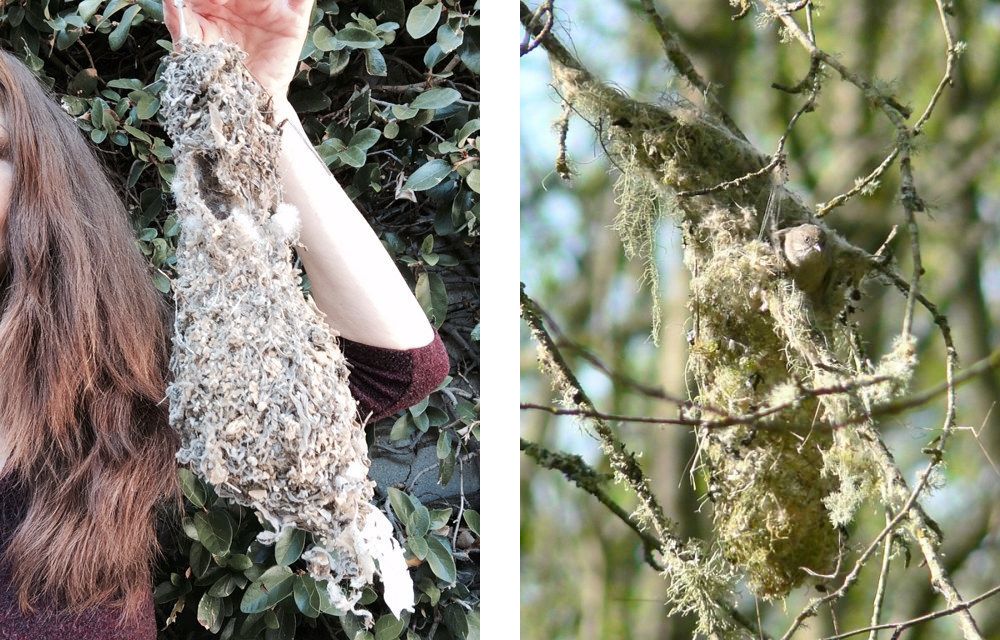
Whether they’re eating, perched or hiding, bushtits are fond of bushes.
p.s. This video by John Hamil shows how the safety of bushes applies to all backyard birds. When you set up a birdbath, make sure to place it near a bush to provide a safe zone for the birds. They need a place to hide when they’re wet.
(video by John Hamil, Johnson Creek, Portland, Oregon, photos from Wikimedia Commons; click on the caption links to see the original)
